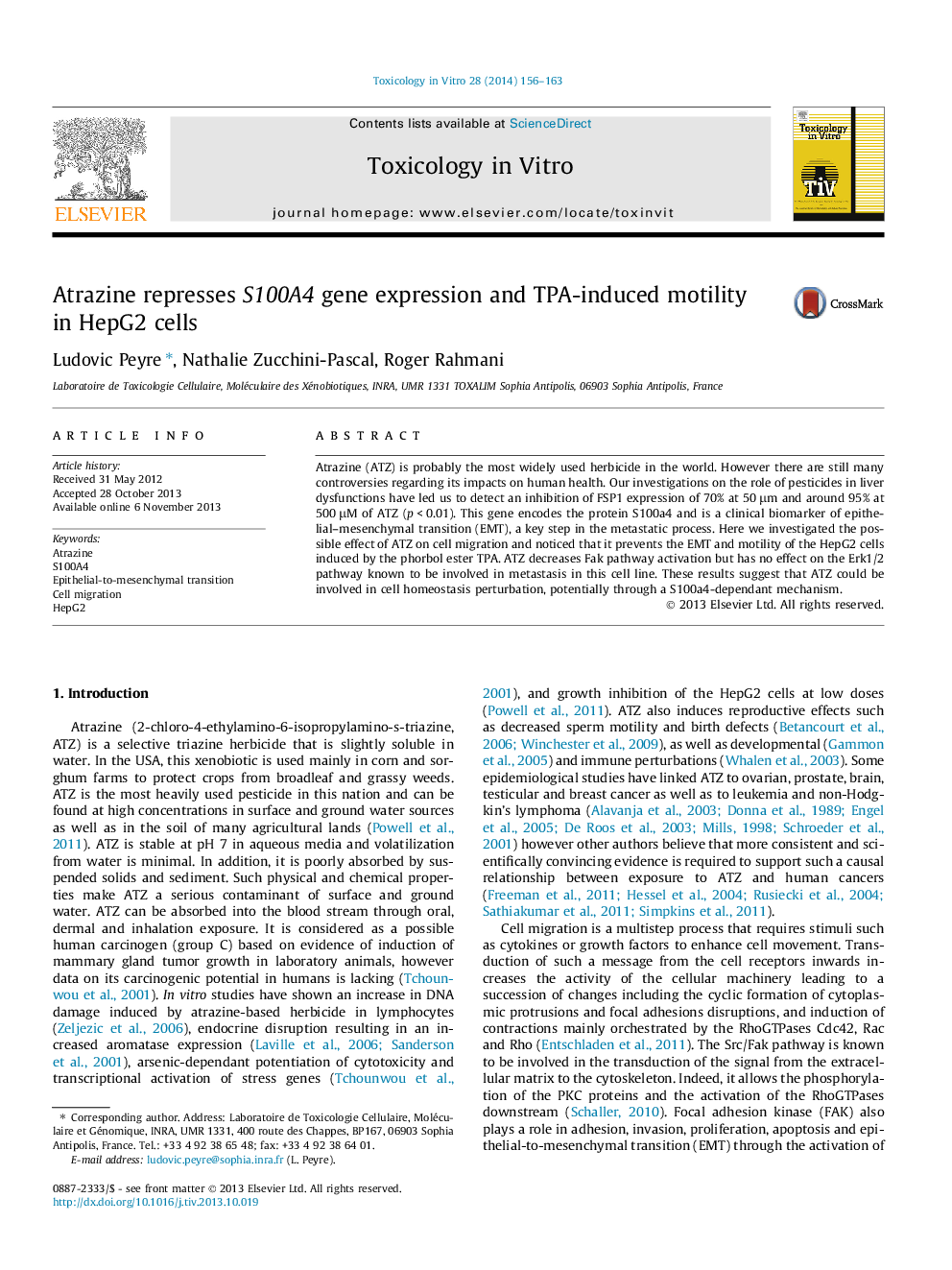| Article ID | Journal | Published Year | Pages | File Type |
|---|---|---|---|---|
| 5862409 | Toxicology in Vitro | 2014 | 8 Pages |
â¢Atrazine herbicide acts as a S100A4 repressor.â¢Atrazine prevents phenotypic changes of HepG2 cells after TPA treatment.â¢Atrazine represses the TPA-induced motility in HepG2 cells.â¢Atrazine limits overexpression of FSP1, ITGA5, FN1 and FAK pathway activation induced by TPA.
Atrazine (ATZ) is probably the most widely used herbicide in the world. However there are still many controversies regarding its impacts on human health. Our investigations on the role of pesticides in liver dysfunctions have led us to detect an inhibition of FSP1 expression of 70% at 50 μm and around 95% at 500 μM of ATZ (p < 0.01). This gene encodes the protein S100a4 and is a clinical biomarker of epithelial-mesenchymal transition (EMT), a key step in the metastatic process. Here we investigated the possible effect of ATZ on cell migration and noticed that it prevents the EMT and motility of the HepG2 cells induced by the phorbol ester TPA. ATZ decreases Fak pathway activation but has no effect on the Erk1/2 pathway known to be involved in metastasis in this cell line. These results suggest that ATZ could be involved in cell homeostasis perturbation, potentially through a S100a4-dependant mechanism.
